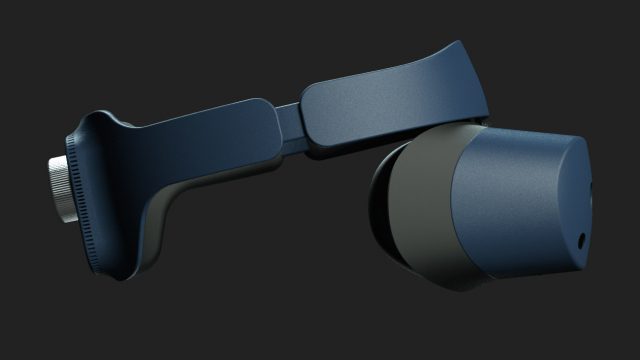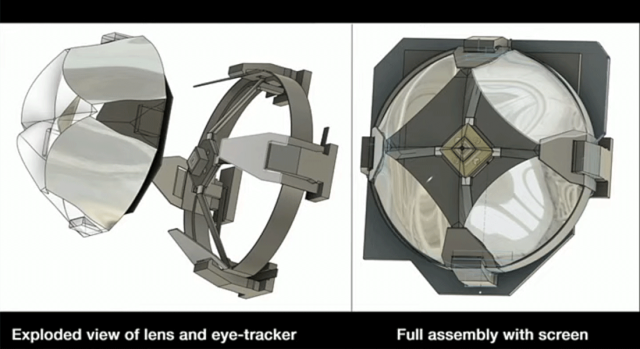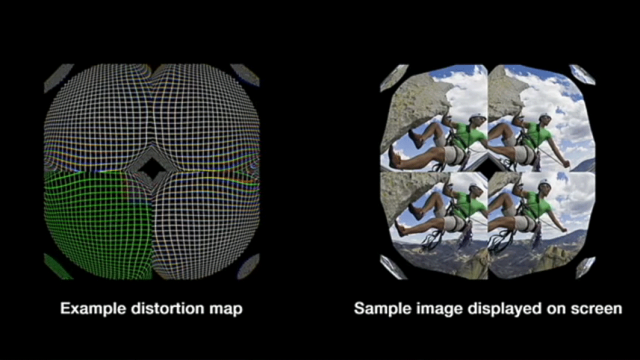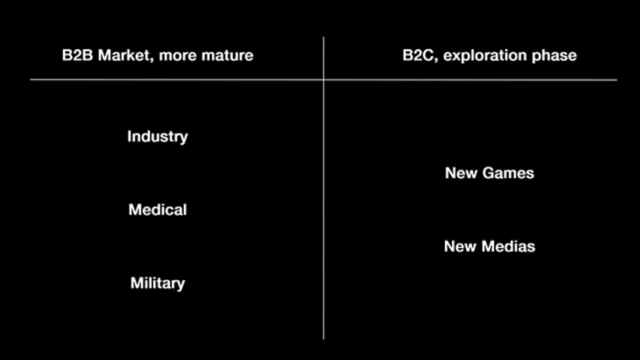Startup LYNX revealed the R-1 earlier this week, a standalone MR headset with a unique optical design. Speaking at a conference on Monday, the company’s founder shared more about the headset and it hopes to achieve with its novel optical approach.
For more specs and details on the Lynx R-1, see our reveal coverage
On stage at the SPIE Photonics West conference in San Francisco this week, Lynx founder Stan Larroque presented the R-1 headset. Designed with pass-through AR in mind, the standalone mixed reality headset is being built on the Snapdragon XR2 chip.
Larroque said that the headset is aimed primarily at enterprise applications and is expected to ship this summer, priced at $1,500. Pre-orders are available now on the company’s website with a $150 down-payment.

One of the R-1’s most unique attributes is its novel lenses which the company describes as a “4-fold catadioptric freeform prism.” The lenses are much more complex than the simple lenses seen in the majority of VR headsets available today. Surely they’re bulkier and may be more difficult to manufacture, but the benefits, Larroque said, are “not only about the optical performance we get, it’s also about the [headset] form-factor and the fact that we can hide things right at the center.”

What might you want to hide in the center of the lens? An eye-tracking camera, said Larroque. While most headsets with eye-tracking place cameras at extreme angles to the eye (to avoid the camera being visible to the user) Larroque said that the R-1’s optics allows an ideal central placement for the headset’s eye-tracking camera, potentially allowing for greater precision and accuracy.
The “light folding” optics are designed to wrap the image from the display around the eye-tracking camera to make it invisible. Larroque said that the image on the display is divided into four quarters and then reassembled into a single image by the optics. He showed the headset’s ‘distortion map’ which defines how the initial image is pre-warped to counteract distortions in shape and color introduced by the lens. While pretty much all headsets use pre-warping, the R-1’s distortion map is pretty complex by comparison.

The optics also appear to have a very compact focal length, allowing the displays the be flush with the lenses; other things being equal, this would make the headset more compact than those with more simple lenses which need to be a certain distance from the display in order to correctly focus the image into the user’s eye.
Larroque said that the R-1 uses a 90Hz, 1,600 × 1,600 LCD display for each eye, and that the lens overlaps portions of the image which allows for “supersampling” in those regions. From the brief description, we take this to mean that overlapping pixels in those regions will fill in some of the screen door effect (the unlit spaces between pixels), though we’ve reached out to Lynx for clarity.
While there’s purported benefits to this lens approach, the R-1 headset only achieves a 90 degree horizontal field of view, and it’s hard to imagine that some of the lens seams won’t be visible, though we haven’t had a chance to look through the headset in person just yet.
Larroque reiterated that the Lynx R-1 headset is aimed mostly at B2B applications and some ‘exploitative’ B2C use-cases, though the company will sell the headset to individuals as well.

“I’m very excited for all the hobbyists and some developers and the cool ideas they will explore with this device,” he said. “We are already partnering with a big game company and you will see amazing stuff coming out this Summer.”
That said, there’s still lingering questions about the software stack that Lynx R-1 will use and what tools will be available to developers. While we can expect and Android foundation and an SDK, it isn’t clear how much the company will layer on top, or if it plans to launch its own software distribution ecosystem for the headset. We’ve reached out to the company for more details.







